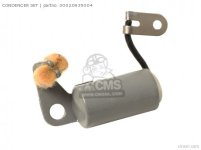From previous threads I have posted you may know I have picked up a couple outboards that are breaker points motors. One is a BF75Z (7.5hp 1979) and the other a BF100 (1978). Cant get either one started. Tested coils, kill switches, new plugs, etc. Only thing I can't test is the condensers. They are no longer available on everyones parts list. I did find a company overseas that thier website says the have them but they are physically checking to see if they have a couple or not. Even then with shipping and the cost of the part I am looking at $75+ for 2 of them.
Honda part number= 30020-935-004
Has anyone found a replacment condenser for this part that is cheaper and more available? If so what part number and or where to get it?

Thanks,
Jeff
Honda part number= 30020-935-004
Has anyone found a replacment condenser for this part that is cheaper and more available? If so what part number and or where to get it?

Thanks,
Jeff

